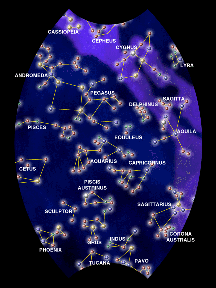When we arrange the stars into constellations it helps us to map the sky
Click on image for full size
The Unchanging Sky
The unvarying aspect of the relationships of the
stars' positions may have suggested to the ancients something that was analogous to
their beliefs about the universe. It is not surprising that they chose to express
their beliefs metaphorically, believing that groups of stars, constellations, and
moving planets were associated with their deeply held stories of the creation,
sustenance, and destruction of the universe. Human beings, even now, use metaphor
to express deeply held beliefs, in the
poetry
and
art of societies.
In more modern times some of the ancient designations for star arrangements have
remained, giving us a flavor
of what the world felt like when the sky was "closer". The names, positions and
groupings of stars help us to give order to the sky in our minds.
You might also be interested in:
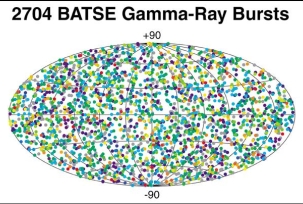
In the 1960's, the United States launched a series of satellites to look for very high energy photons, called Gamma Rays, that are produced whenever a nuclear bomb explodes. These satellites soon detected
...more
The introduction of telescopes to the study of astronomy opened up the universe, but it took some time for astronomers to realize how vast the universe could be. Telescopes revealed that our night sky
...more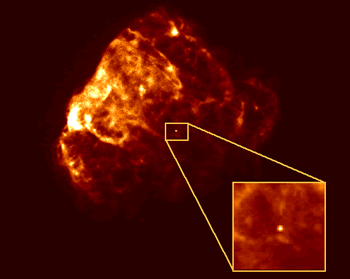
Neutron Stars are the end point of a massive star's life. When a really massive star runs out of nuclear fuel in its core the core begins to collapse under gravity. When the core collapses the entire star
...more
Spiral galaxies may remind you of pinwheels turning slowly as though in some intergalactic breeze. They are rotating disks of gas, dust and stars. Through a telescope or binoculars, the bright nucleus
...more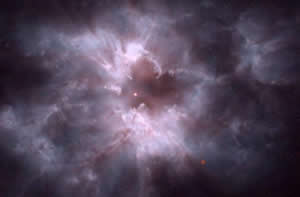
White Dwarfs are the remnants of stars that were massive enough to stay alive using nuclear fusion in their cores, but not massive enough to blow apart in a Type II supernova. When stars like our own sun
...more
What's in a Name: Arabic for "head of the demon" Claim to Fame: Represents Medusa's eye in Perseus. A special variable star that "winks" every 3 days. Type of Star: Blue-white Main Sequence Star, and
...more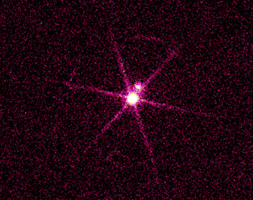
What's in a Name: Nicknamed the "Pup" because it is the companion to Sirius, "the Dog Star" Claim to Fame: Highly compressed white dwarf remnant. Density about 50,000 times that of water. It has approximately
...more


